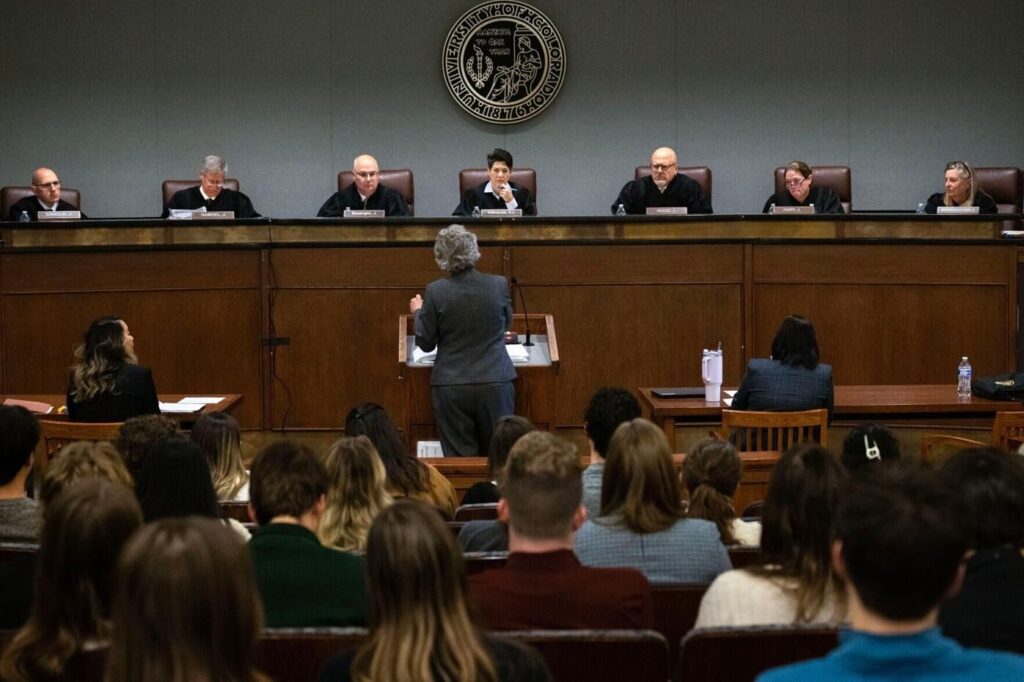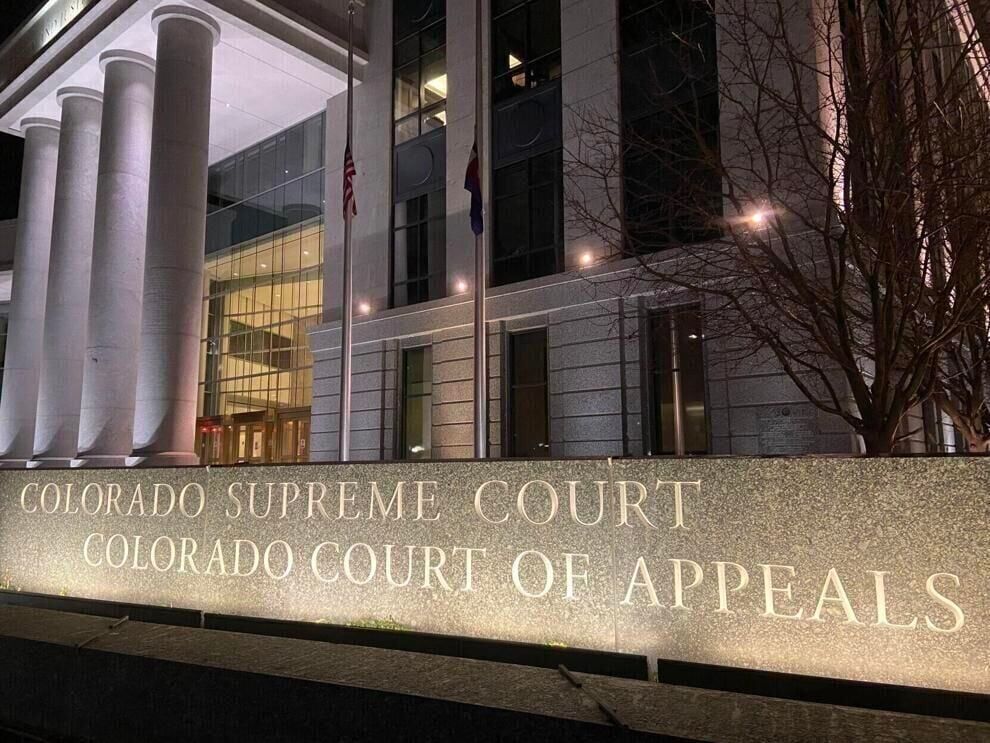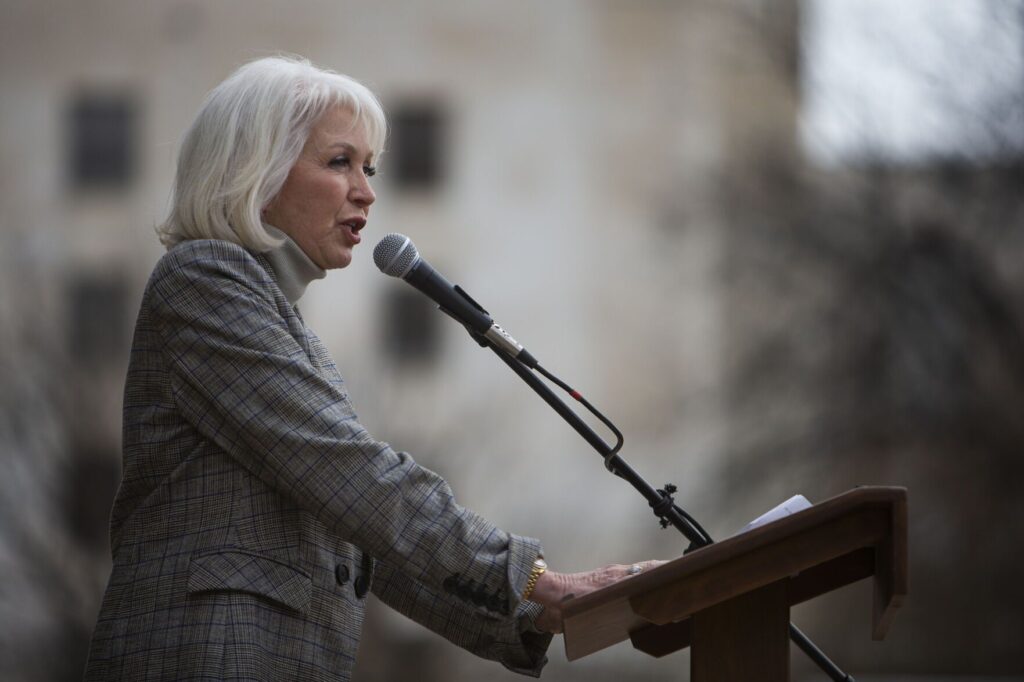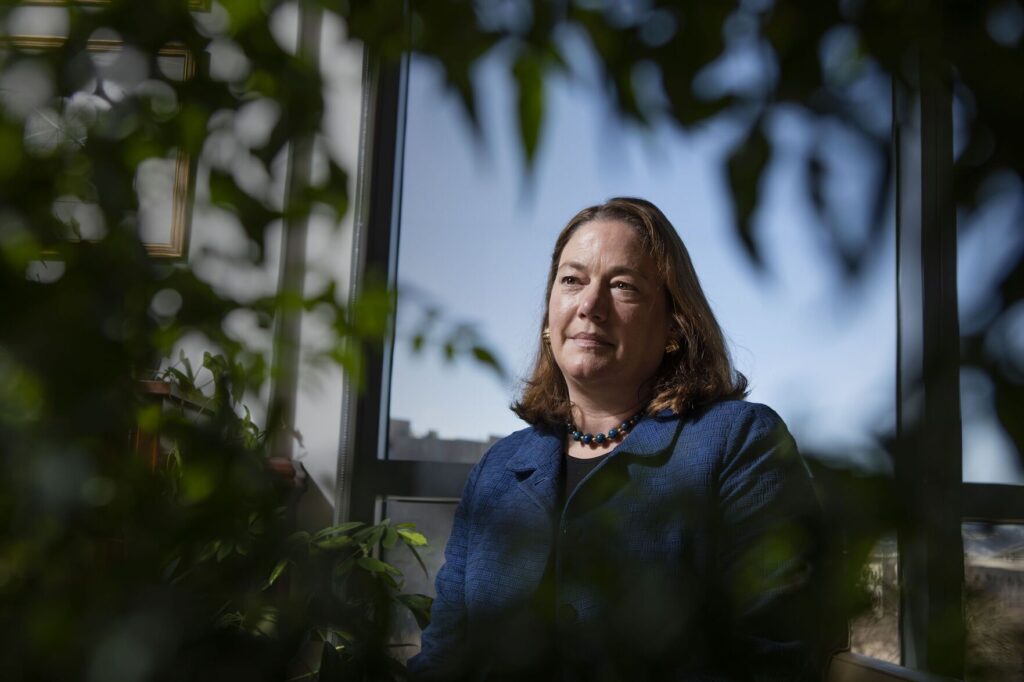‘Perseverance and quiet courage’: 10th Circuit honors Stephanie Seymour as longest-serving judge
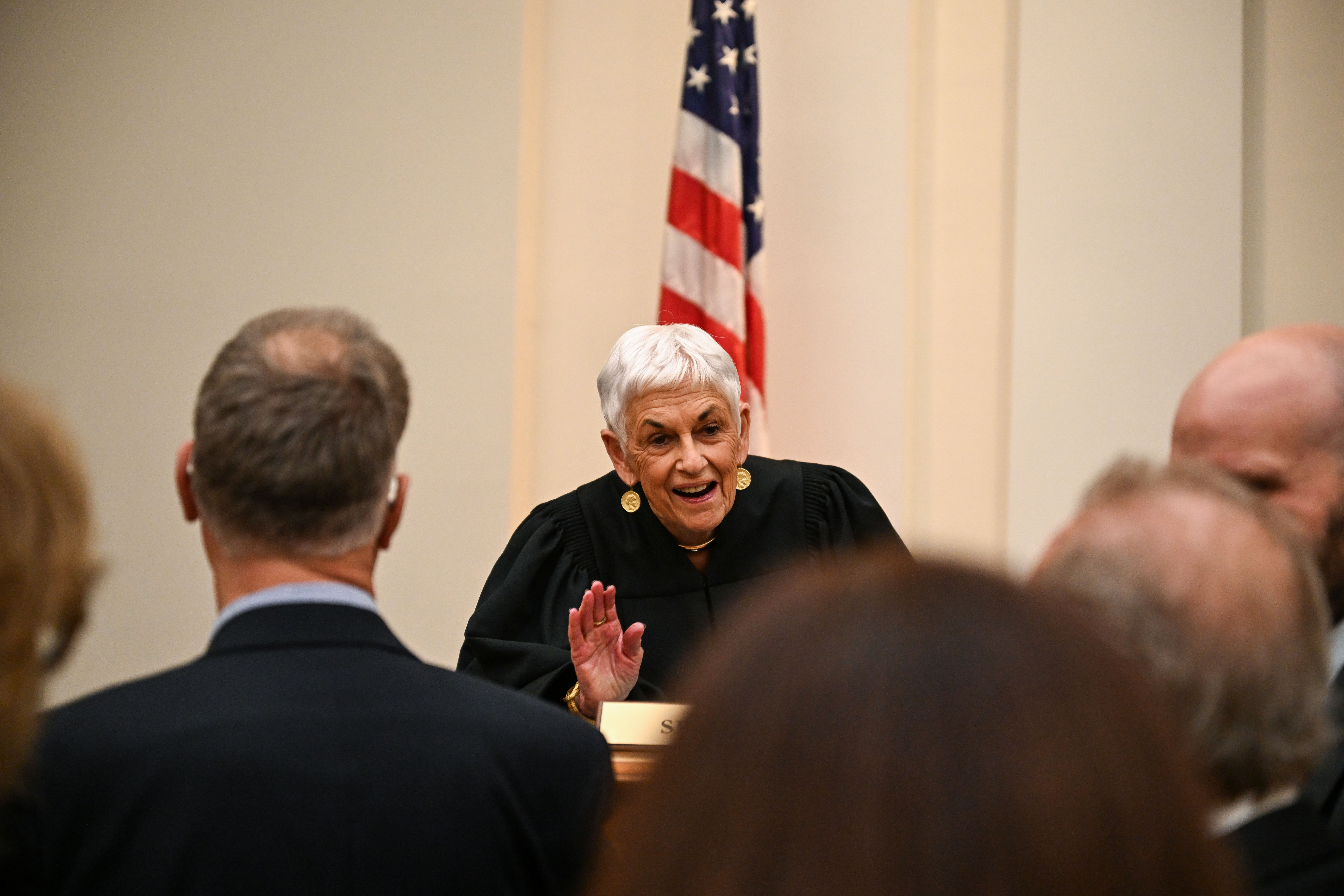
The Denver-based federal appeals court honored its longest-serving member on Tuesday by unveiling a portrait of Senior Judge Stephanie K. Seymour that will hang in the courthouse.
“It has been an honor of a lifetime to have gotten this job and I have to thank Jimmy Carter,” said Seymour, “who set up a merit nominating commission because he wanted women and minorities in the federal courts. And under that procedure and his guidance, I was one of 11 women named to the federal courts of appeals under President Carter.”
The U.S. Court of Appeals for the 10th Circuit hears appeals of federal cases arising from Colorado, Oklahoma, Kansas, Utah, New Mexico and Wyoming. Seymour, of Oklahoma, took her seat in 1979 at age 39 and as the first woman on the court. She served as the 10th Circuit’s chief judge from 1994-2000 and took a form of semi-retirement known as “senior status” in 2005.
Chief Judge Jerome A. Holmes, who succeeded Seymour in her Oklahoma-based seat, said the judges voted “unanimously and enthusiastically” to display her portrait in the Byron White U.S. Courthouse’s ceremonial courtroom.
“Hers is a story of perseverance and quiet courage. At a time when the idea of a woman serving on a federal appellate court was, to say the least, questioned,” he said, “Judge Seymour proved that excellence and integrity know no gender.”
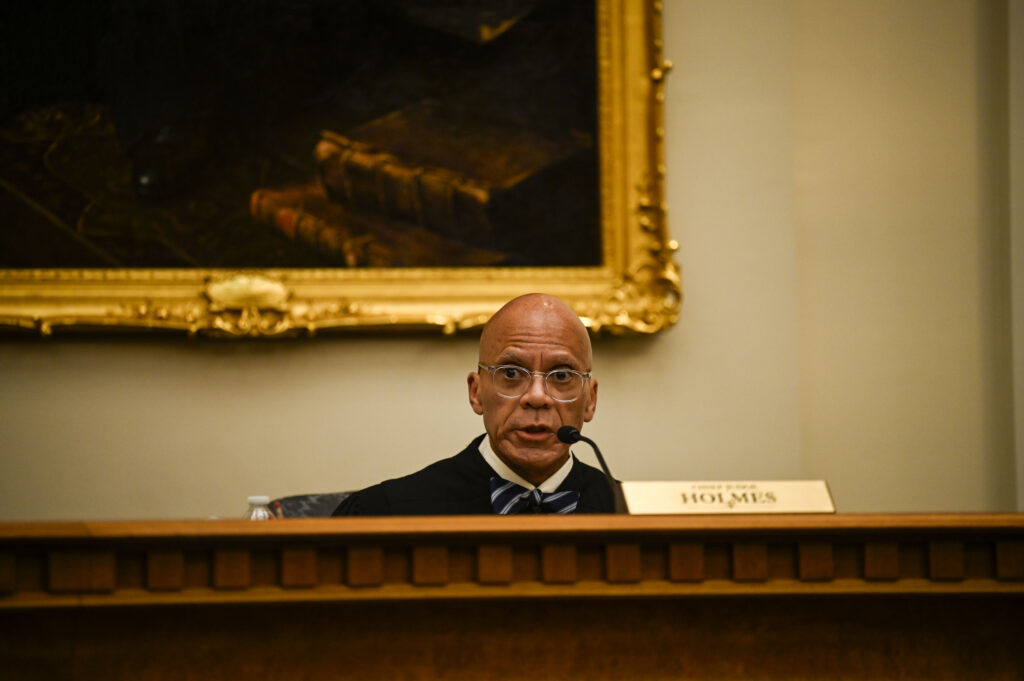
In her nearly 46 years on the bench, Seymour authored several decisions of significance. In Gonzales v. Castle Rock, she wrote that a woman could proceed to sue Castle Rock after police officers allegedly ignored her pleas to enforce a restraining order against her husband — and the inaction resulted in him murdering their children.
“For us to hold otherwise would render domestic abuse restraining orders utterly valueless,” Seymour wrote. The U.S. Supreme Court later reversed the decision.
She also wrote the 10th Circuit’s opinion in Brown v. Board of Education, a case that arose decades after the Supreme Court’s landmark school desegregation decision of the same name. The later litigation alleged Topeka, Kan. still operated a racially segregated school system. Although a trial judge sided with the school district, Seymour wrote for a 2-1 majority that Topeka did not “actively strive to dismantle the system that existed.”
Seymour, on the 10th Circuit Historical Society’s podcast, pointed to her decision in Indian Country, U.S.A., Inc. v. Oklahoma as one of the first rulings to hold that Indian nations were sovereign and were not subject to Oklahoma’s sales tax on their bingo operations.
She added that she “hated” death penalty cases, many of which arose from Oklahoma. When she took senior status “that was the first thing I quit doing. No more death penalty cases.”
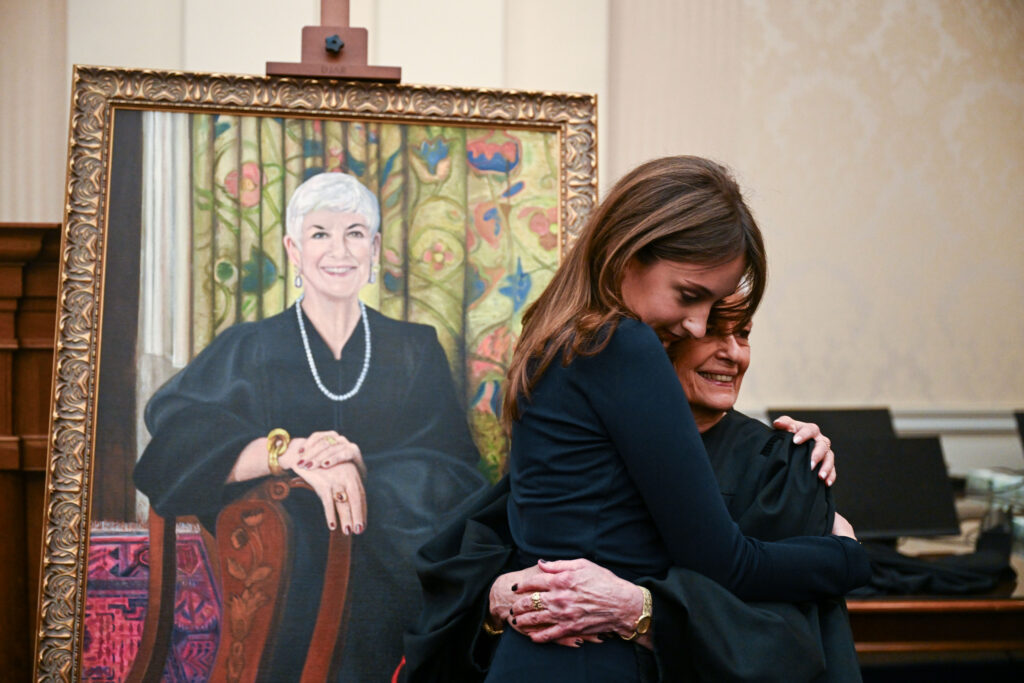
Seymour grew up in Battle Creek, Mich. She attended Harvard Law School and was one of 23 women in a class of 580.
“I had a lot of guys say to me, ‘You shouldn’t be here taking the place of a man.’ My response was, ‘There’s only 23 of us. There’s 560 of you. You shouldn’t be here taking the place of a woman.’ And that usually shut them up,” Seymour said on the historical society’s podcast.
She moved to Tulsa and worked as a lawyer, and relocated to Houston afterward. Seymour worked on and off between pregnancies, and her husband’s job prompted the family to move to Singapore.
Eventually, after returning to Oklahoma, the commission set up by Carter for judicial selections considered Seymour as a candidate for a judgeship. Seymour described the chair of the commission as rejecting her application on the grounds that “she’s got four children. She couldn’t possibly handle the job.” Carter wound up nominating her.
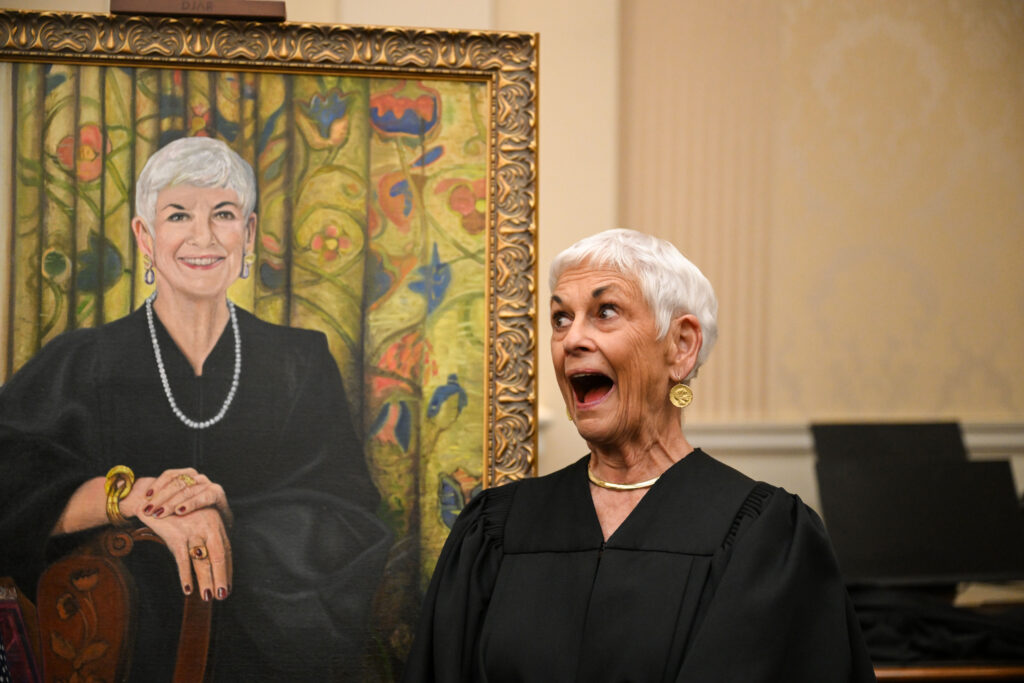
In an interview with the Oklahoma Women’s Hall of Fame Oral History Project in 2011, she spoke about her time as chief judge and her corresponding seat on the Judicial Conference of the United States, the policymaking body for the federal judiciary.
“When I first went to my first meeting, I was seriously considering quitting being chief because it’s all this — you have to cut back on your legal stuff because it takes up so much time,” she recalled. But “there were two other women besides me. So, I decided I owed it to women in the federal judiciary to stay on as chief, so there would be a female representative to the judicial conference. I really enjoyed that part of it.”
In that same interview, Seymour also commented on her decision to take senior status and open a vacancy during the presidency of George W. Bush.
“I had people telling me I should wait until a Democrat got in, but I don’t believe in that. I think the system works fine the way it is. It’s gotten much too politicized,” she said. “And in most cases, it makes absolutely no difference when you’re deciding an environmental case or a corporate case or energy law case.”
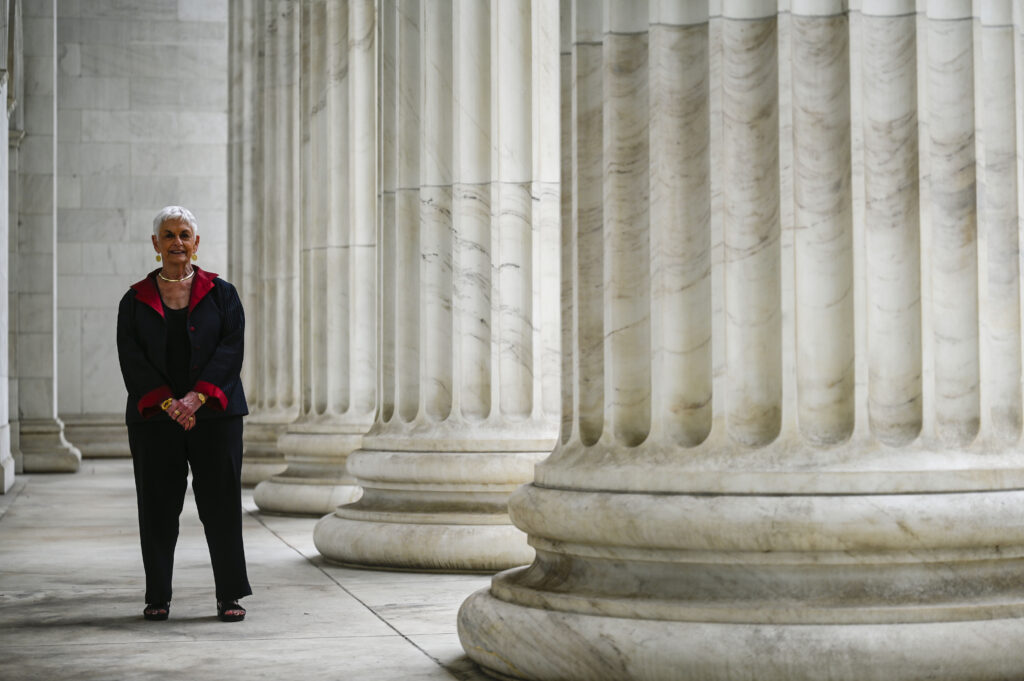
Seymour remains one of a handful of Carter appointees still on the bench. The group includes U.S. District Court Senior Judge John L. Kane of Colorado, who was appointed two years before Seymour.
“I thank my colleagues for being great colleagues,” Seymour said during the portrait ceremony. “Each of us has a lifetime appointment. We decide the law as it should be decided, not because we’re Republican or Democratic appointees. And that’s one of the great things about the federal bench.”
On the historical society’s podcast, she said the court always “bent over backwards” to treat her nicely, but the legal profession as a whole is less sexist than it used to be.
“We have grown in the number of women since I’ve started, but we have a ways to go as you can see,” she said during the ceremony. Four of the circuit’s 12 active judges are currently women.
Holmes said the portrait was paid for using funds raised from the other judges, Seymour’s friends and her supporters.


